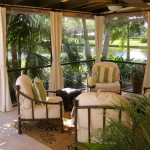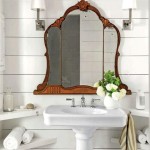How to Decorate a Newborn Baby Room
Creating a welcoming and functional space for a newborn baby is a significant undertaking for expectant parents. The room should be aesthetically pleasing, safe, and conducive to both the baby’s development and the parents’ comfort. Careful planning and thoughtful execution are crucial to achieving a nursery that fulfills these requirements. This article will explore key considerations and practical strategies for decorating a newborn baby room.
Prioritizing Safety and Functionality
Safety is paramount when designing a nursery. Furniture selection, material choices, and overall room layout must minimize potential hazards. The crib should meet current safety standards, with a firm mattress that fits snugly within the frame. Avoid crib bumpers, as they pose a suffocation risk. Instead, consider breathable mesh liners if desired. Regularly inspect the crib for loose hardware or sharp edges. The placement of the crib should be away from windows, blind cords, and any hanging decorations that the baby could reach and pull down.
A changing table is another essential piece of nursery furniture. It should feature a secure safety strap and raised sides to prevent the baby from rolling off. Keep all changing supplies, such as diapers, wipes, and creams, within easy reach but out of the baby's reach. A designated waste disposal container specifically for soiled diapers is also crucial for hygiene and odor control. Ensure that the changing table is stable and does not wobble.
Storage solutions are vital for maintaining an organized and clutter-free nursery. Chests of drawers should be sturdy and anchored to the wall to prevent them from tipping over. Opt for soft-close drawers to minimize noise and prevent the baby from pinching their fingers. Baskets and bins can be used to store toys, blankets, and other baby essentials. Open shelving should be used with caution, as items can be easily knocked off.
The nursery floor should be covered with a soft and easily cleanable material. Carpet provides a comfortable surface for the baby to play on, but it can also trap allergens and be difficult to clean. Area rugs are a good alternative, as they can be easily removed and cleaned. Hardwood or laminate flooring is also a practical option, but it should be paired with a soft rug to provide cushioning.
Window treatments should block out light to create a dark and restful environment for the baby. Blackout curtains or shades are ideal for naptime and nighttime sleep. However, ensure that the window coverings are cordless to eliminate the risk of strangulation. If cords are unavoidable, use safety devices to keep them out of the baby's reach.
Creating a Calming and Stimulating Environment
The nursery should be a calming sanctuary for the baby, promoting relaxation and sleep. Color choices play a significant role in creating this atmosphere. Soft, muted colors, such as pastel blues, greens, and grays, are generally considered to be more soothing than bright, vibrant colors. Avoid overly stimulating patterns or designs that could overwhelm the baby. A neutral color palette can be easily accessorized with pops of color through bedding, wall art, and other decorative items.
Lighting is another important factor in creating a calming environment. A dimmer switch allows for adjusting the light levels to create a soft and relaxing ambiance. A nightlight is also essential for nighttime feedings and diaper changes. Avoid using overhead lighting, as it can be too harsh for the baby's eyes. Instead, opt for table lamps or floor lamps with soft, diffused light.
While a calming environment is important, the nursery should also provide some level of stimulation for the baby's development. Mobiles are a classic nursery decoration that can help to develop the baby's visual tracking skills. Choose a mobile with simple shapes and colors that are easy for the baby to focus on. Place the mobile within the baby's line of sight but out of reach.
Wall art can also be used to stimulate the baby's development. Choose artwork that is age-appropriate and visually appealing. Simple, geometric patterns or pictures of animals are good options. Avoid overcrowding the walls with too much art, as this can be overwhelming. A few well-chosen pieces can add character and interest to the room without being distracting.
Sound is another important aspect of creating a stimulating environment. A white noise machine can help to block out distracting noises and create a more peaceful sleep environment. Soft music can also be played to soothe the baby. Choose music that is gentle and calming, such as lullabies or classical music.
Personalizing the Space and Adding Comfort
Personalizing the nursery can make it feel more special and welcoming. Incorporating elements that reflect the parents' personalities and interests can add a unique touch to the room. Consider displaying family photos or artwork created by family members. A personalized name banner or wall decal can also add a personal touch.
Comfort is essential for both the baby and the parents. A comfortable glider or rocking chair is a must-have for nighttime feedings and cuddling. Choose a chair that is well-padded and supportive. A footrest can also help to make the chair more comfortable. Place the chair in a convenient location, such as near the crib or the changing table.
Soft blankets and pillows can add a touch of comfort and warmth to the nursery. Choose blankets made from natural fibers, such as cotton or wool, that are gentle on the baby's skin. Avoid using pillows in the crib until the baby is at least one year old, as they pose a suffocation risk. Decorative pillows can be used on the rocking chair or glider to add a pop of color and comfort.
Adding plants to the nursery can help to purify the air and create a more relaxing environment. Choose plants that are safe for babies and do not require a lot of sunlight. Spider plants, peace lilies, and snake plants are all good options. Place the plants out of the baby's reach to prevent them from being ingested.
The overall layout of the nursery should be designed to maximize comfort and functionality. The crib should be placed in a location that is easily accessible for nighttime feedings. The changing table should be located near the crib to minimize the distance that the baby needs to be carried. The rocking chair or glider should be placed in a location that is comfortable and convenient for the parents.
Ultimately, the goal is to create a nursery that is both beautiful and functional, providing a safe and comfortable environment for the newborn baby. By carefully considering the safety, comfort, and developmental needs of the baby, parents can create a space that is both welcoming and nurturing.

7 Baby Room Decor Ideas For Your New Arrival Rascal Babies


Top 15 Innovative Baby Room Decoration Ideas

Easy And Effective Baby Room Decor Ideas Designcafe

Top 15 Innovative Baby Room Decoration Ideas

27 Unique Nursery Ideas From Designer Baby Rooms

4 Original Baby Room Decor Ideas And Inspiration


New Pas Ultimate Guide To Designing The Nursery 7 Simple Steps

Creative Baby Room Ideas For New Pas
Related Posts







